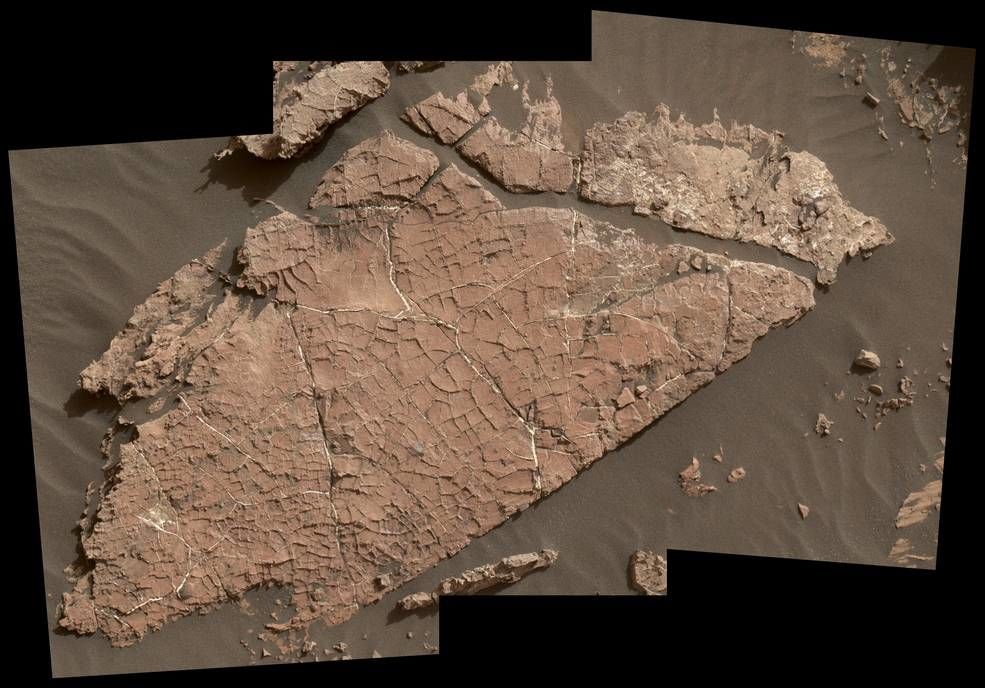Create a free profile to get unlimited access to exclusive videos, sweepstakes, and more!
Mars was pretty much an oasis 3.5 billion years ago

It might be hard to believe when you compare our watery planet to the barren red desert that is Mars, but Earth and Mars were not so different once. What is now known as the arid Red Planet was flowing with rivers and lakes 3.5 billion years ago.
We know there used to be water on Mars, but NASA’s Curiosity rover has been eyeing things in the dust that suggest Mars was more of an oasis than a desert. Now the Curiosity team, who recently published a study in Nature Geoscience, has found even more evidence of briny ancient water in rocks full of mineral salts, which are also proof of an unstable climate that had mood swings until it finally went from wet to freezing and bone-dry.
Crawling around Gale Crater and up Mount Sharp has given the rover a close-up of what were once ponds and streams that would go through erratic periods of flooding and evaporating until they finally vanished, leaving behind mud cracks and dry riverbeds in their wake.
"We went to Gale Crater because it preserves this unique record of a changing Mars," team lead William Rapin of Caltech said.
After what was probably a massive asteroid smashed into Mars and left behind Gale Crater, water and wind carried sediment to the bottom. This was a process that happened layer by layer. As the layers of sediment accumulated, wind carved it into Mount Sharp, whose layers of sedimentary rock are basically an unwritten geological record of Mars.
Each layer is from a different era. Studying these layers can reveal what kind of geo-phenomena were happening on the planet at a particular time.
"As we climb Mount Sharp, we see an overall trend from a wet landscape to a drier one," said Curiosity Project Scientist Ashwin Vasavada of NASA's Jet Propulsion Laboratory (JPL) in Pasadena, California. "But that trend didn't necessarily occur in a linear fashion. More likely, it was messy, including drier periods … followed by wetter periods."
What could tell us more about how long it took for Mars to transition from a planet of rivers and lakes to a dusty wasteland is a region in Gale Crater the team calls the “sulfate-bearing unit.” This area is believed to have formed in a much drier climate than what was found on the lower end of Mount Sharp, which Curiosity found to have evidence of recurring freshwater lakes.
Of course, the presence of water brings about the question of extraterrestrial life—or at least habitability. "Understanding when and how the planet's climate started evolving is a piece of another puzzle,” Rapin said. “When and how long was Mars capable of supporting microbial life at the surface?"
The answer might lie in Sutton Island, a 500-foot-tall stretch of sedimentary rock with a series of mud cracks that already indicate there was once water that would periodically flood the area. What makes Sutton Island different is that the salts it left behind after all its water finally evaporated are not just the NaCl on your table but mineral salts. These salts are mixed with sediment, meaning they crystallized in a watery environment that is thought to have been below the other ponds that were drying up.
"We can't say whether we're seeing wind or river deposits yet in the clay-bearing unit,” team member Chris Fedo said, “but we're comfortable saying is it's definitely not the same thing as what came before or what lies ahead."
So when do we find fossils of Martian microbes? Not yet, but with this much evidence of water, you never know.
(via NASA)


























